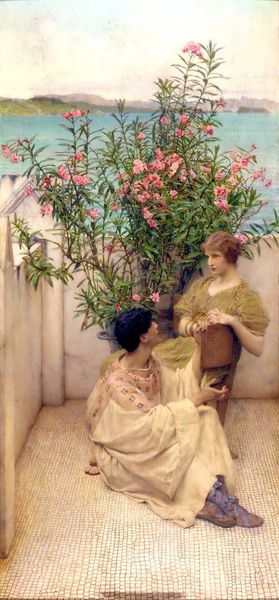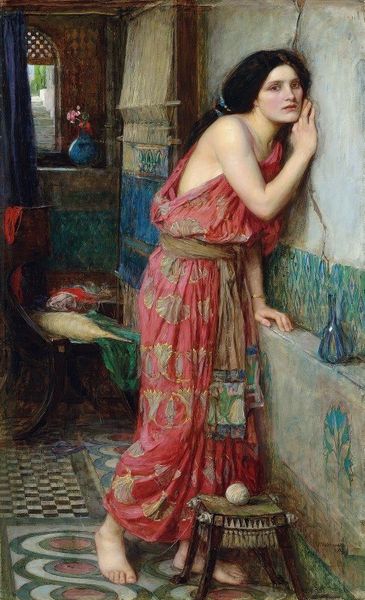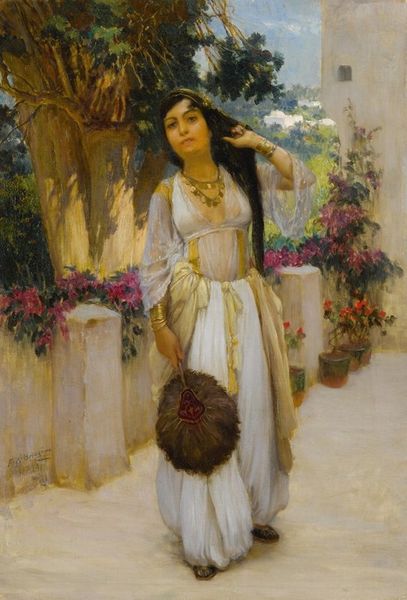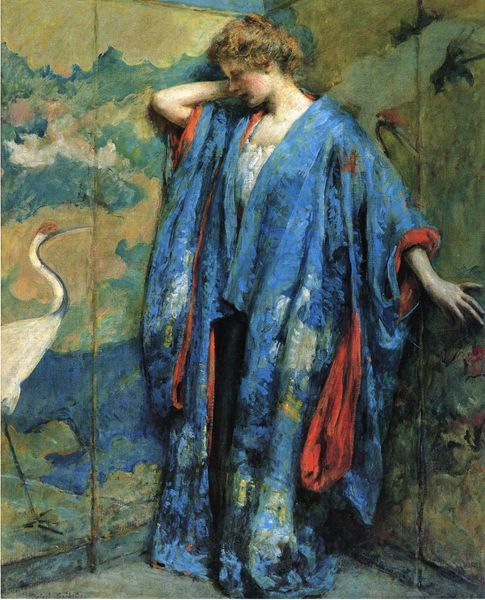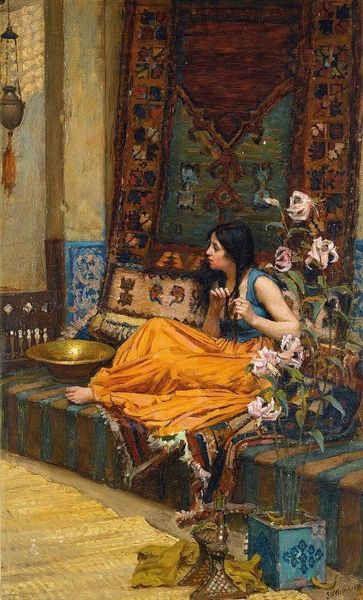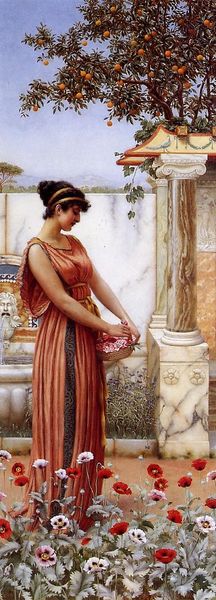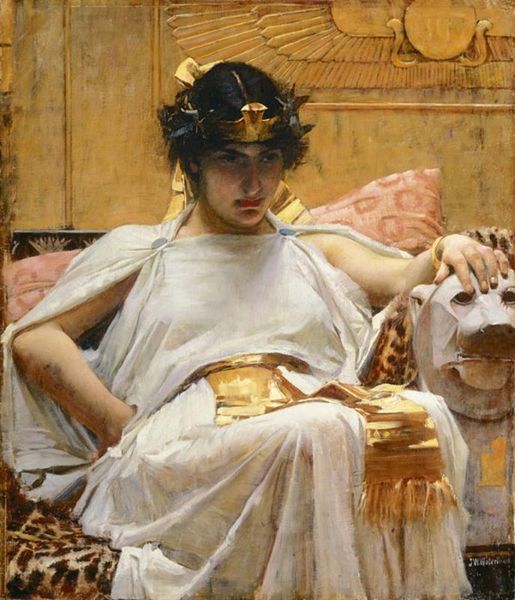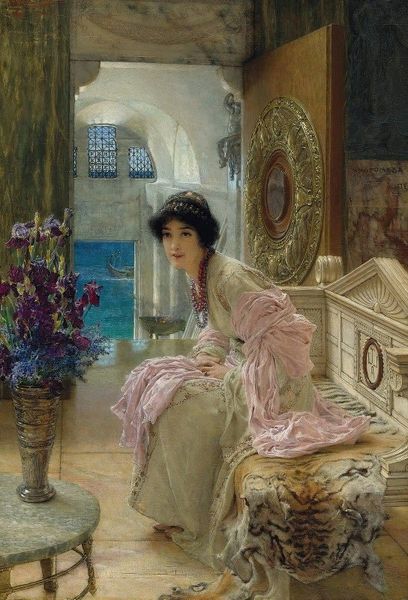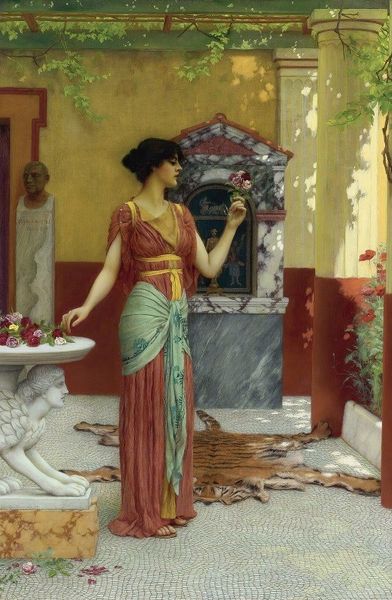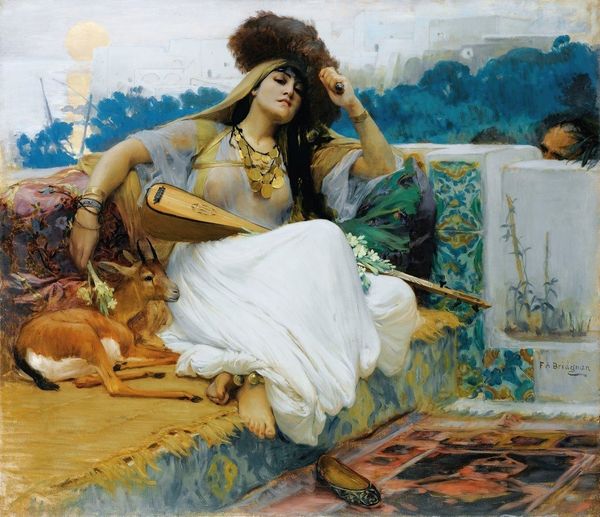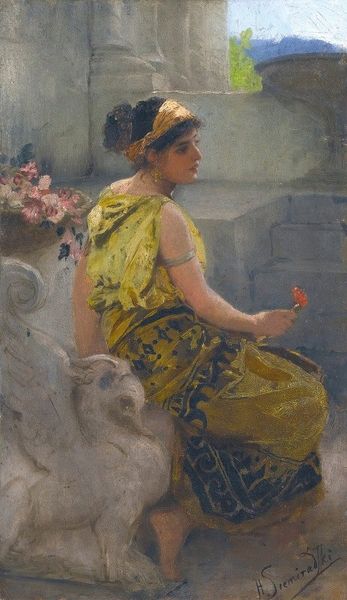
Copyright: Public domain
Curator: This is John William Waterhouse’s "Flora," an oil painting completed in 1890. Waterhouse, often associated with the Pre-Raphaelites, frequently drew inspiration from mythology and literature. Here, he brings the Roman goddess of spring to life. Editor: My first impression is one of subdued sensuality. There's a gentle melancholy in the subject's gaze, despite the vibrancy one might expect from a personification of spring. Curator: Waterhouse's academic training shines through, doesn't it? Note the neoclassical architectural setting. Yet the softness of the brushstrokes and the emphasis on light evoke a dreamy, romantic atmosphere characteristic of the Pre-Raphaelite movement. We must recall that art movements occur, and continue through certain social pressures and anxieties as much as anything else. Editor: Exactly. Waterhouse's portrayal offers an interesting tension. "Flora," adorned in classical garb, feels simultaneously empowered and restrained. Her association with nature and fertility exists alongside an almost stifling sense of decorum. The pose seems both languid and performative, her gaze almost wary. Curator: That resonates. Waterhouse was painting in a time of rapidly shifting social mores, particularly for women. This image of Flora could be seen as a commentary on the evolving roles and expectations of women at the close of the Victorian era, the new woman perhaps caught between ancient archetypes and emerging modernity. Editor: I see how Flora embodies that in-betweenness. The whiteness of her dress contrasts with the lush colors surrounding her, maybe symbolizing the idealized purity expected of women, but also hinting at an unfulfilled potential for something more vibrant. I want to consider also the fetishizing, romantic orientalism of figures and spaces from the mediterranean at that point. It’s so powerful, but is its intention at least partially obscured? Curator: That's insightful. Examining this piece through that lens is vital to understanding its cultural significance, acknowledging its position within an ongoing negotiation between power, representation, and female identity. Editor: Indeed. Seeing "Flora" today prompts crucial questions about whose narratives are amplified within our cultural institutions. Curator: Well said. These conversations about perspective only enrich the experience and keep these classical masterpieces contemporary, a testament to their impact on art and our evolving understanding of it.
Comments
No comments
Be the first to comment and join the conversation on the ultimate creative platform.

